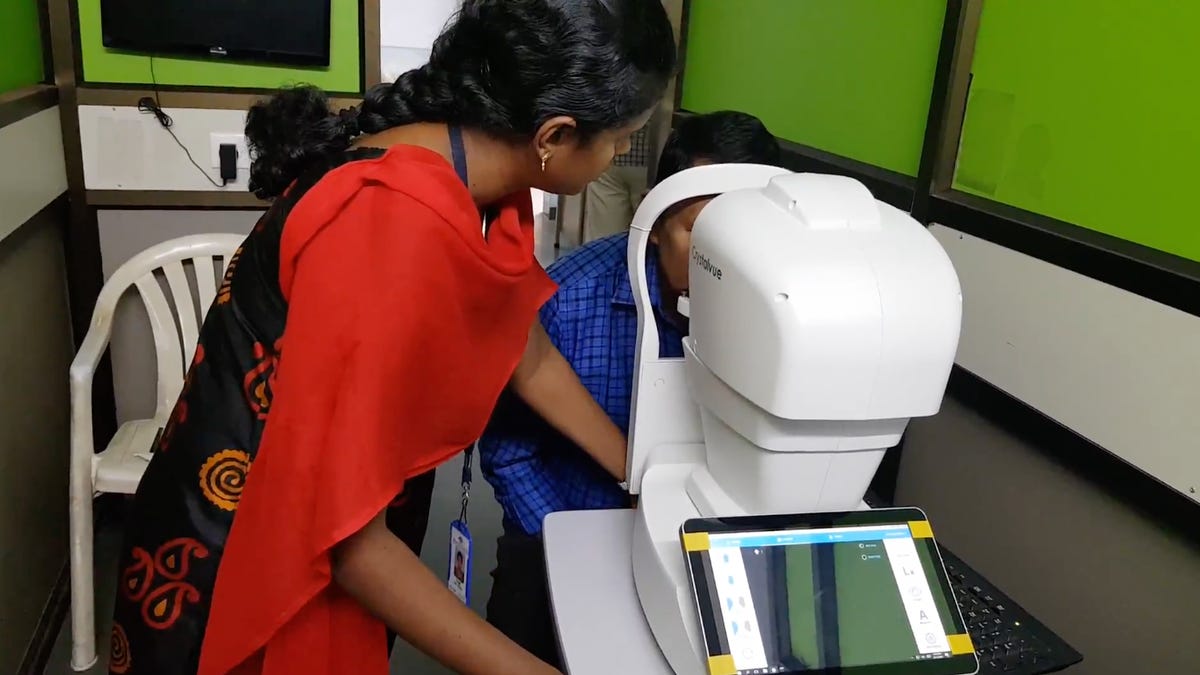Google and Verily use AI to screen patients for diabetic eye conditions
Their algorithm was used in a real-world clinical setting for the first time in India.

Google and Verily's algorithm in use at the Aravind Eye Hospital in India.
Google and Verily, Alphabet's life sciences arm, are using machine learning to screen for diabetic retinopathy (DR) and diabetic macular edema (DME), two eye conditions that can lead to blindness. The goal is to enable automated screening that can detect disease sooner and provide more people with access to screenings.
Verily, part of Google parent company Alphabet, has been working with the search giant to conduct clinical research around the world and particularly in India, where studies showed the algorithm was as good at assessing images for disease as general ophthalmologists and retinal specialists, according to a Monday blog post from the companies. The results of the research led to the "first real world clinical use of the algorithm" at Aravind Eye Hospital in Madurai, India, this year, the companies said.
The algorithm received the CE mark, certifying that it's met safety, health and environmental protection requirements in the European Union, according to the post.
In India, several cases of DR are undiagnosed because of a shortage of more than 100,000 eye doctors and a lack of screening for 66 million diabetics, the companies said. Machine learning could help more people get appropriate screenings, according to Dr. R. Kim, chief medical officer and chief of retina services at Aravind Eye Hospital.
"By integrating Verily and Google's retinal diagnostic program into our screening process, we can improve our efficiency, giving physicians like myself more time to work closely with patients on treatment and management of their disease while increasing the volume of screenings we can perform," Kim said in a statement.
At Aravind Eye Hospital, technicians take an image of each eye, and the algorithm then assesses the image for DR and DME. The technicians get quick feedback to determine whether a patient needs to be referred to a doctor.
Aravind's vision centers provide care to remote and rural parts of India. Verily and Google said they believe their algorithm could help in other parts of the world with a shortage of eye doctors and a growing number of people with diabetes. The companies also recently began a study with Rajavithi Hospital in Thailand to examine the algorithm's impact in a national DR screening program. In addition, they're working with Nikon and its subsidiary Optos to find other areas where machine learning tools that screen for diabetic eye disease could be helpful.
Verily was previously working on smart contact lenses embedded with sensors that could potentially help diabetics monitor their glucose levels, but put that project on hold in November.

